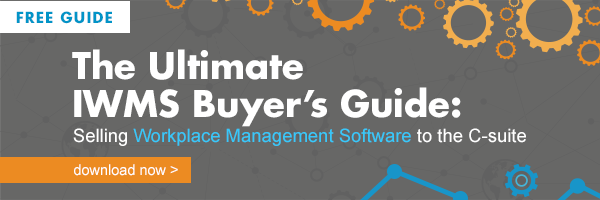Real Estate VPs Tips: What to Include in a Space Management Software RFP


For Business Leaders who have been a part of the business world for many years, a request for proposal has been an integral part of managing acquisition of services and allocation of company investments. While the RFP process offers valuable information regarding the contenders for contract, they are sometimes filled with details that make a clear, concise, and informed decision challenging. Additionally, many RFPs only consider the current needs of the organization, with little or no regard to future goals. This leaves a wide margin for error, as the business’ needs are sure to change and evolve over time.
Our work with some of these Business Leaders has offered us valuable insight into the leading practices and challenges businesses face when attempting to procure software solutions primarily through the RFP process. With this in mind, we wanted to share with you advice from these Leaders regarding what details to include in your software RFP.
But first, let’s take a look at a few common pitfalls to avoid in your RFP process.
Three Mistakes to Avoid in Your Software RFP
1) Failure to build a caucus/team of consensus
Your Workplace Management software impacts the entire organization. Failure to get key leaders from HR, IT and other key business departments on board with an investment in a space management tool could hinder success. Data and requirements for use from each of these groups is critical to choosing and implementing a space management solution. Make sure to build consensus to maximize your investment. 
2) Setting an unrealistic timetable for your investment.
It is critical to the success of your software implementation that reasonable and achievable goals are set regarding the timeframe set for completion. Your request should include target dates for each phase and should allow ample time for candidates to construct a customized, quality response.
3) Developing a request that focuses on price alone.
Reducing organizational costs is probably high on your to-do list and is a primary reason for your investment. This is accomplished, however, by improving the overall functionality of the company and investing in the most inexpensive software solution might not be the best avenue for achieving results. If vendor fees are of chief importance to this project, consider rolling out the implementation in stages, adding additional modules as savings are realized.
Now that we have identified several of the most common RFP pitfalls, let’s take a look at some of the specifics recommended when creating a workplace management software request.
Let’s look at a few items you will need to include in your software RFP:
- Can software track space and occupancy for multiple sites and buildings? Ability to store and analyze space utilization data for each facility?
- Does it have the ability to calculate space chargebacks to occupancy groups at multiple organizational levels?
- Can space and occupancy types be user-defined?
- Are stacking diagrams available for a more visual experience?
- Does it have the ability to report on assignable, usable, renewable, and gross areas by room, floor, building, or site?
- Does software support the creation of multi-year space forecasts based on headcount projections or percent growth?
- Capable of performing “what-if” scenarios to analyze space forecasts and identify best fit scenarios?
- Does it have the ability to visually plan move scenarios, calculate future allocations, and make necessary adjustments?
- Is it capable of generating move request tickets and notify support of move needs based on space scenarios?
- Ability to track alternative occupancy methods such as hoteling or remote working for your mobile workforce?
- Can space be graphically displayed by occupancy status, department, space standard, or other room based data categories?
- What are its integration capabilities and what will be required on your part for integration to go smoothly? Does it have the capability to integrate with IT, HR, and Accounting? Are modules tightly integrated to share data across the entire platform? Space planning, facility maintenance, and tracking charge backs are an integral part of reducing facility expenses.
- Can the system be integrated with AutoCAD or Revit?
- Does the solution offer mobility for your workforce? Are mobile applications available for each module and if so, what devices are they compatible with? Is the tool company hosted or SaaS?
Reporting is Critical for Creating a System of Checks & Balances
Data reporting and analytics are critical for identifying trends and reducing facility costs. While each individual department’s software offers reporting capabilities, the facilities manager must pull together disparate data to make informed decisions regarding both the  current and future health of the company. FM teams must be able to show senior level management that the business is maintaining a high performance space, as well as back up the recommendation for changes with solid, real-time data. Reporting is an essential tool to maintaining employee satisfaction – the ability to track productivity and recognize individuals for a job well one.
current and future health of the company. FM teams must be able to show senior level management that the business is maintaining a high performance space, as well as back up the recommendation for changes with solid, real-time data. Reporting is an essential tool to maintaining employee satisfaction – the ability to track productivity and recognize individuals for a job well one.
A robust reporting system should have the ability to run reports or other ad-hoc queries without impacting response times on user interface and transaction processing. It should be able to integrate with third party reporting solutions, as well as generate reports based on information pulled from all system modules. For high-level business meetings, be sure your investment has the ability to generate custom reports on the fly and that it can be exported into multiple formats and easily shared.
Boosting productivity and maximizing profits are critical components to the FM strategy. An integrated, comprehensive software solution is an integral part of helping management make informed decisions and fully understand the functionality of organizational assets. But to realize your investment’s full potential, it’s important to perform due diligence and align yourself with a software vendor who understands both current and future needs and offers the tools to fulfill those demands. A RFP is your first opportunity to define those goals and explore potential partnerships. Make sure your request is concise, yet complete, addressing the important elements required for ongoing success.
Interested in learning more about RFPs? Our blog “Do’s and Don’ts of Creating an Effective RFP” offers expert advice on developing a well thought-out RFP.
